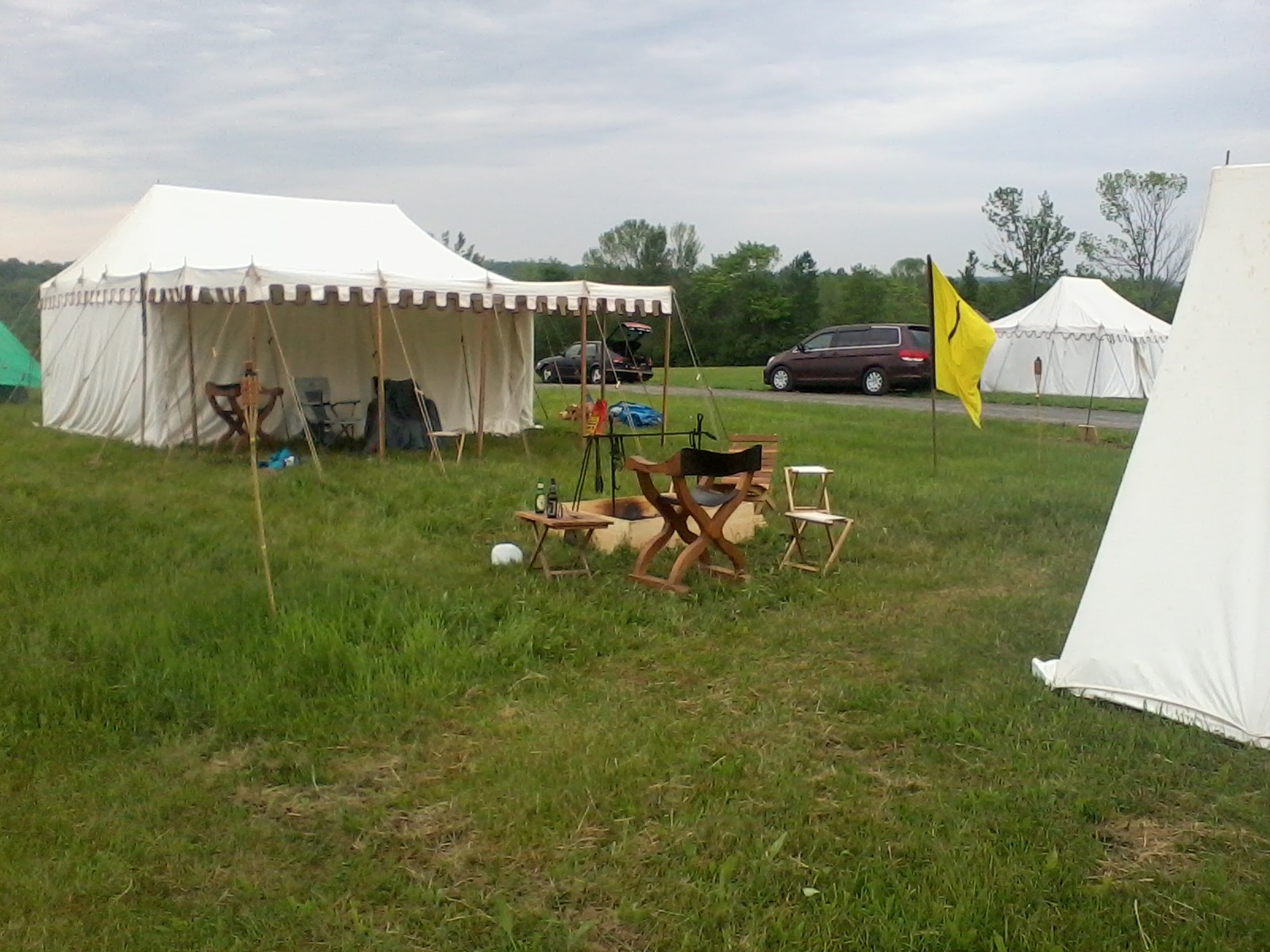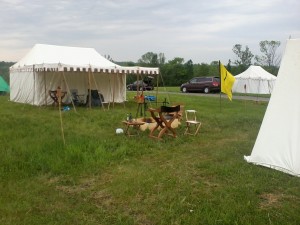First, if you think you like cooking over a fire, you may think for a moment, that if a little is good, more is better, right?
Which is why the night of Promethean Chicken was both better and worse than I hoped. First – fire cooking is awesome. A fat capon or rooster dripping and sizzling could warm the coldest heart! However, try to feed 26 people, and you now need three fat hens, and a lot of extra chicken parts! Because cooking for five, or even eight, or even ten is one thing. Cooking for more than two dozen is – well, let’s just say I should have planned better for that in terms of time management.
HOWEVER, we never fail to stare at adversity and not make a face of some sort, so we went onward and upward and chose to still cook, for nearly everyone at camp, over the fire during Tuesday evening at Pennsic. Luckily, my camp was pretty patient, and I had some good help from Erin, Hannah and Petra to prep. Mathias made me a great fire, and Justin dug me the most awesome fire pit ever. People seemed to have enough to eat, and the chicken was utterly delicious, as were the veggies which managed to actually cook all the way.
RECIPES
Promethean Chicken (that’s bardic for “chicken in fire”)
- Chicken/s (removed of gizzards and such, with skin on)
- Two onions per chicken, roughly cut
- Olive oil
- Salt, pepper, spices to taste (in this case, garlic powder, salt and pepper)
- Fire.
- Tinfoil
Build a nice fire with excellent coals. Stuff chicken with onions. Coat with oil and spices. Wrap in several layers of foil and put into the coals of the fire, heaping them on the chicken if possible. Cooking time will vary, but will likely be about 2.5 hours total (if the chickens are evenly spaced.)
Roast Vegetables
- Potatoes, carrots, onions, garlic cloves (whole)
- Olive oil
- Salt and pepper (spices if desired)
- Foil
Cut the veggies coarsely. Toss in spices and oil. Pack in packets of foil. Place in the fire, heaping coals on the top of them. Check after about 45 minutes. Cooking time will likely be about 2 hours. You may wish to open them now and then to add a little water (or beer!) to help steam them a little, keeping them from burning and also cooking them faster.
Chicken in the Pot
- Good size Dutch oven with cover, to hang over hot fire
- Ten lbs thigh/leg combos of chicken
- One bottle dark beer
- Dozen garlic cloves, crushed
- Five onions, chopped coarsely
- Salt, pepper and spice as wished
- Extra dish for rotating the top and bottom pieces
This is easy. Get a big pot. Fill with chicken. Add beer. Put cover on. Hang over fire for about 1 hour. Try not to drool into the pot when you open it. Move chicken pieces so the top pieces are on the bottom, and vice versa, so it all cooks more quickly and evenly. This chicken is to die for. And it’s insanely easy.
Lab Report
Now, of course, it’s Pennsic. So I got dinner started late, and then everyone got hungry. And it’s on a fire, so well, there’s variance in the cookery. Suffice to say, start about 3.5 hours before dinner, using half an hour to prep. As it was, some stuff cooked beautifully (perfect carrots and taters) and other packets were crunchy, which is not awesome in a potato. However, all the chickens cooked in about 2 hours and change, and were tender, succulent and wonderful. Totally worth the wait. The Dutch oven chickens cooked very well and quickly – they’d be a good started for the first batch of diners, while the roasters finish roasting. All in all, it was a little later than normal, but everyone had lots to eat and were full of happiness by the time it was darkish out. Then we sang by the fire.


